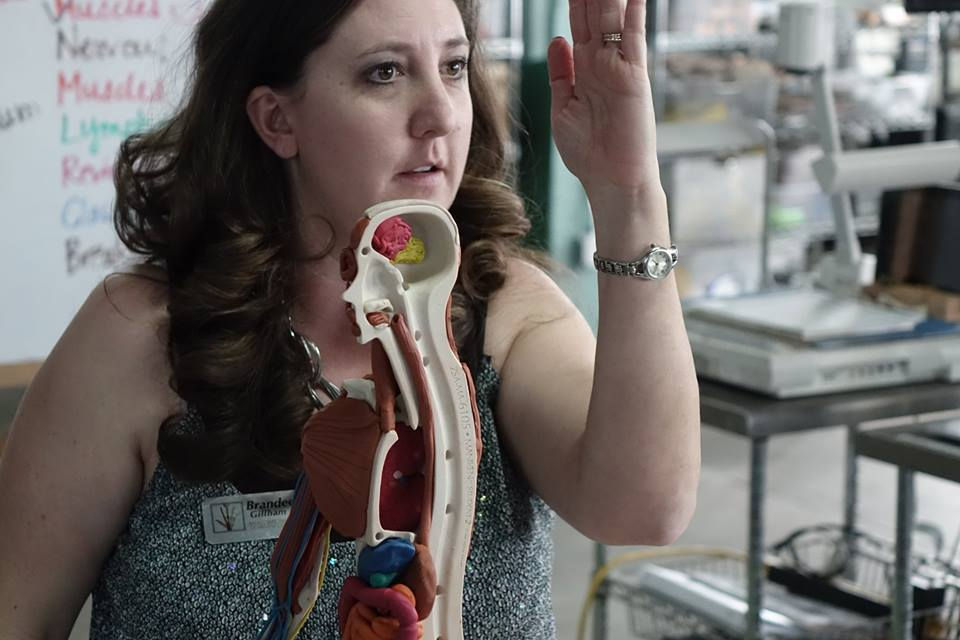Brandee Gillham
- ANATOMY IN CLAY® System

- Aug 8, 2018
- 3 min read
It was fascination with the sinking of the Titanic in fourth grade that may have led, many years later, to helping Brandee Gillham diagnose her own cancer more quickly.
The Titanic’s sinking and all the research around it led to an interest in science that lasted all the way through high school. Later, it was a professor at Colorado State University who played Bruce Springsteen songs at the beginning of every class that drew Brandee into wanting to learn more about human anatomy.
So, Brandee went on to earn a master’s degree in biomedical science, with an emphasis in human anatomy.
And, finally, it was a “good looking cowboy” who, in her words, “changed the trajectory of my life.”
She married him. And she moved to a 10,000-acre ranch in remote northeastern Colorado to raise children, raise quarter horses, and help oversee a ranch with 400 head of cattle.
In 2012, with all her training and education in human anatomy, Brandee came to work as an independent contractor for Anatomy in Clay® Learning System, helping run professional development classes for teachers and other workshops around the country.

About a year later, she woke up one morning with a lump in her neck.
“I thought, ‘wow, it would really suck to have cancer,’ and my second thought was, ‘it would really suck to lose my hair,’” she recalls. “So, being a standard female, I called the doctor that day and got in with a physician, did some bloodwork, and they said, ‘You have mono.’”
The doctor said to come back in three weeks if the lump didn’t go down. It didn’t. So the doctor did an ultrasound—and still thought it was “mono gone bad,” in Brandee’s words. The doctor said it might take six months to dissipate. But the doctor said Brandee should come back if, in three weeks, she found that she was still uncomfortable. By now, she had two masses “the size of eggs” on her neck.
The doctor put her on steroids. “I mean, by that point, I knew enough about the brachial plexus to know that these growths were starting to impede the nerves in my arm and I said, ‘We’ve got to look at something else.’”
After months of a variety of treatment options, Brandee’s self-advocacy led the doctors to call for a biopsy. “I did have to kind of fight for myself a little bit,” she says.
The results came back: Hodgkin’s lymphoma.
It had been growing, by that point, for six months. Undiagnosed.
Brandee is not bitter. To be fair, she points out, the Epstein-Barr virus is present in both mononucleosis and Hodgkin’s lymphoma. The two diseases have the same base issue but “substantially different outcomes,” in Brandee’s words.
Within five days, Brandee was on chemotherapy. She had a port installed to onboard the medicine. Brandee had 12 different infusions over six months.
The prognosis, however, was good—an 85 percent survival/cure rate.
It was a grueling six months. “The best way I can describe it is like boiling black tar with green toxic fumes coming out of your mouth,” she says today.
Brandee is fine today. She’s clear of cancer—five years and counting.

The experience taught her that, when teaching anatomy, the lymphatic system should not be overlooked or rushed or given short-shift in school instruction—at any level.
It might be good to shorten up teaching some of the other body systems so the lymphatic system isn’t rushed at the end, she says.
All the sciences are important, she says. But anatomy, she says, “is vital.”
If anyone should know that for a fact, it’s Brandee Gillham.
#titanic #cancer #coloradostate #CSU #brucespringsteen #humananatomy #anatomy #mastersdegree #biomedicalsciences #cowboy #ranch #colorado #quarterhorses #cattle #anatomyinclay #professionaldevelopment #lump #neck #bloodwork #mono #selfadvocacy #hodgkinslymphoma #lymphoma #epsteinbarr #substantuallydifferentoutcomes #chemotherapy #infusions #prognosis #85percent #survival #curerate #cancerfree #fiveyears #lymphatic #lymphaticsystem #vital




Comments